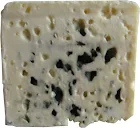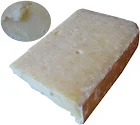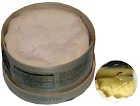All about French Cheese
All about French cheese: history, how it is made, categories, tasting, recommendations. Say cheese!
Welcome to a virtual cheese tour de France. We tasted the country’s sumptuous variety of cheeses to prepare this little gift to you.
According to a French proverb there is a different cheese for every day of the year in France (un fromage par jour de l’année). The proverb is modest, though, as there are some one thousand distinct local cheeses. President Charles de Gaulle once asked how can you govern a country who has so many kinds of cheese (Ernest Mignon: Les Mots du Général, 1962).
The History of Cheese
Cheese making does not originate in France, but most probably in the Middle East or Central Asia. The earliest archaeological evidence of cheese making has been found in Egyptian tomb murals, dating to about 2000 BC. According to a legend nomadic tribes learned cheese making accidentally by storing milk in a container made from the stomach of an animal. The milk turned to curd and whey by the rennet of the stomach.
In Ancient Greek and Rome people knew already a dozen of distinct cheeses. Cheese was an everyday food for the rich and the soldiers. Homer’s Odyssey describes Cyclops making and storing sheep’s and goats’ milk cheese. The production methods were similar to the current ones: milk was coagulated, the curd pressed, salted and aged. Historian Pliny described the cheeses favoured by Romans. According to him the best cheeses came from Nîmes, that is from the South of France.
In the Middle Ages cheese was made in monasteries, and many of the now known cheese brands like Le Munster and Le Maroilles, were already recorded. The French word cheese (‘fromage’) appeared for the first time in 1500. It comes from the Latin word ’forma’ that meant the mould used for cheese making.
Today France is the third biggest cheese producer while United States is number one and Germany number two. USA produces cheese mainly for home market whereas France is the number one cheese exporter in the world. The world’s largest cheese consumer is a bit surprisingly Greece with its feta cheese (27,3 kilos per person per year). France is the second largest consumer (24 kilos per person per year). The statistics describe year 2004.
Categorization and Quality Control
Cheeses are traditionally divided into seven categories:
| Category | Examples |
| Fresh cheese | Brocciu |
| Soft, fresh cheese with a floury rind | Brie, Camembert, Chaource |
| Soft, fresh, and rind-washed cheese | Epoisses, Maroilles, Munster, Pont l’Eveque |
| Blue vein | Roquefort, Fourme D’Ambert, Bleu de Gex |
| Goat cheese | Crottin de Chavignol, Selles-Sur-Cher |
| Hard, unripened cheese | Cantal, Morbier, Saint-Néctaire, Tomme |
| Hard, ripened cheese | Comté, Beaufort, Abondance |
Some French cheeses have been awarded an AOC label (l’appellation d’origine contrôlée, controlled term of origin). All AOC products have to hold to a rigorous set of clearly defined standards. They must be produced in a consistent and traditional manner, and ingredients have to be acquired from specifically classified producers in designated geographical areas. Most of the AOC cheeses are named after the production area and others are not allowed to use a part of that name even if it is a town name.
The purpose of the AOC label is to control quality and maintain traditions. The oldest AOC cheeses date from 900-1000. Since then the production methods have varied a lot and some of them have resembled each other only distantly. When the EU started to control AOC cheeses in 1992, a big amount of producers were kicked out. Today AOC cheeses represent 17 per cent of the yearly production in France. There are some 150 AOC labelled products (cheese, butter and cream) in Europe.
Our TOP 10
We tasted all kinds of cheeses and Santeri got back the kilos he lost in Asia. Our pilgrimage changed finally into a cheeseless diet. The concept of light cheese is quite unknown in France as fat is an integral part of taste. It is better to eat good cheese more seldom than some plastic and rubbery substitutes daily.
We found our favourites quickly, but the choice for TOP 10 was hard. We tasted only a couple of cheeses that we didn’t like (les Tomme and light cheese Fromage de Montagne). There would have been many more good cheeses to add on the list like Le Beaufort, L’Epoisses, Le Livarot, Le Chaourche, Le Pont l’Éveque and Le Reblochon. Please click the photos below to see enlargements.

1. Le Vieux Lille is a good old smelly cheese. It is made from cow milk in the province of Nord-Pas-de-Calais in Northern France, near Belgium border. Vieux Lille is quite unknown to many French people, but those who know call it "Le Puant de Lille", "the stinky Lille". The smell is really strong, but so is the taste. Vieux Lille is made from another cheese called Le Maroilles. Le Maroilles is sank in brine for three months. The rind of the cheese is smooth and the colour goes a bit orange. Inside cheese is ivory-coloured and very soft (’coulant’). It looses its shape easily and becomes a bit sticky. Mine workers in the North used to eat Vieux Lille down in the mines. Obviously the stink didn’t annoy anyone there. It is easy to imagine how horrible Chinese people would find Vieux Lille as they don’t eat any cheese. When we tried to find some cheese in Carrefour in China, we were given a pot of yoghurt. Try Vieux Lille and other strong cheeses with crêpes and marmalade.

2. Le Munster (AOC) is an old cheese made from cow milk. It comes from the Northern provinces of Lorraine ja Alsace near German border. Benedictine monks started to produce Munster already in the 7th century to preserve milk and feed the ever growing population surrounding the monastery. Munster’s rind is yellow or a bit orange. It is tasty and it has a strong smell. Like any cheese the taste is stronger if the cheese is made with unpasteurized milk. Munster is flat and round (diameter 13-19 cm, height 2,4-8 cm, weight 1,5 kg). Try cumin bread with it. A cold beer or white wine of Alsace makes a perfect companion for this great cheese.

3. Le Maroilles (AOC) is another cheese with character made from cow milk. It comes from the province of Nord-Pas-de-Calais near Belgian border. The cheese carries the name of the monastery of Maroilles where it was invented in the 10th century. Maroilles is square by shape and its rind is reddish orange. It resembles a bit Pont-l’Éveque and Munster. Le Maroilles has a strong smell and taste just like Vieux Lille, L’Époisses and Munster. It goes well with rye bread.

4. Le Roquefort (AOC) is made from sheep milk. It’s a classic known in more than 70 countries and the most popular one of imported French cheeses. Roquefort was the first cheese to get an AOC label in 1925. The history of Roquefort is long as it was already known in the 9th century. It is produced near the Pyrenees in the town of Roquefort-sur-Soulzon. The city held the monopoly for production already at the times of Charles VI in 1411. Nowadays there are six private companies producing the cheese and a cooperative who collects milk from more than 2500 sheep farmers. Roquefort is made only from unpasteurized milk. There are huge cellars in the city where cheeses are aging in cold and humid (95%) air. It is due to this mysterious alchemy and the slow aging process that favours the growth of Penicillium Roquefort from which the cheese gets its unique taste. The production process takes at least three months. Roquefort is a strong and salty blue cheese. It has a lot more salt than any other cheese. A good Bordeaux or Côte du Rhône goes beautifully with it. You can also try it with gingerbread like the Finns do.

5. Le Cantal (AOC) is an excellent pressed cheese made from cow milk. It comes from the green province of Auvergne. Cantal is impressive. It is a huge cylinder-shaped piece which weighs 35-45 kilos (diameter 36-42 cm, height 35-40 cm). The cheese is pressed twice. To get one kilo of Cantal ten litres of cow milk is needed. Milk can be pasteurized or unpasteurized. Cantal matures in fresh, sombre and humid cellars. It is sold at different ages. Young Cantal (‘jeune’ or ‘douce’) is 1-2 months old, middle-aged Cantal (‘entre-deux’ or ‘doré’) 2-6 months and old (’vieux’ or ’caractère’) more than 6 months. When the cheese gets old, it gets a slight orange shade. Taste varies. In young Cantal you can taste flavours of butter, vanilla and toffee whereas old Cantal is a bit spicy and stronger. It is better to buy the cheese when it is slightly dry as it gets tastier.

6. Goat cheese has a unique, strong taste who some people love and some hate. We tasted numerous farm cheeses, AOC cheeses (e.g. creamy Le Ste-Maure de Touraine) and cheeses with different spice and herb coatings. They are all excellent, but we also discovered that a simple industrially produced goat cheese sold in supermarkets is tasty. With goat cheese you just can’t make a bad choice. The biggest difference with farm cheeses and industrially produced cheeses is shape and texture. Industrially produced goat cheese is usually a cylinder, whereas farm cheeses can be small round buttons, cylinders or pyramids. Texture varies from soft to hard ones in farm cheeses while industrial cheese goes easily to pieces. The cheapest, industrial goat cheeses are also perfect for cooking. They only cost some 6-8 Euro per kilo (2008). At the end of this blog you can find a recipe for a French goat cheese quiche.

7. Le Camembert de Normandie (AOC) comes from the province of Normandy as the name says. The production is allowed only in five departments. Camembert was invented accidentally by Mme Marie Harel who intended to do Brie. The production began in 1791. Camembert is made from cow milk and the process takes 35 days. The cheese is sold in small round boxes. The rind of the cheese as well as the taste is soft and creamy. It smells strongly of land. All Camembert cheeses are very alike. The use of unpasteurized milk makes the biggest difference.

8. Le Morbier (AOC) comes from the province of Franche -Comté, near Swiss border. It is made from cow milk (Montbéliard and Pic Rouge de l’Est) and the process takes 1,5 months. Morbier is easy to recognize as there is a dark line in the middle of the cheese. It is wood charcoal (‘cendre du bois’ or ‘ligne cendrée’) with which the curd is protected. The rind of the cheese goes from beige to orange. Its taste is a kind of mixture of Brie and blue cheese. It is not very strong, but nice and creamy.

9. Saint Felicien comes from the province of Rhône-Alpes from the region of Ardèche, where some hippies moved after 1968-movement to herd goats. Saint Felicien was originally made from goat cheese, but nowadays it is made from cow milk or a mixture of the two. The name of the cheese is unprotected and it is usually produced industrially. It is sold in round plastic boxes of 180 grams. Saint Felicien is soft and spreadable. It has a medium strong taste and it’s creamy.

10. Le Mont-d’or (AOC) is made from cow milk in the province of Franche-Comté and also in Switzerland. It is sold only between the 10th of September and the 10th of May. Mont-d’or is soft and creamy, very sophisticated, and it has a slight flavour of smoke. It is sold in round cylinders weighing 700 grams. Mont d’or is often enjoyed like fondue. Make a small hole in the middle of cheese, pour some white wine, heat the cheese and enjoy it either with a spoon or as a dip.
Market Culture

The French appreciate farm cheeses (‘fromage fermier’). These cheeses can best be found straight from the farm or from the market. There are markets in every city and even in small villages every week. Markets are a social happening where people go to chat and to have some coffee.
Farm cheeses are made from unpasteurized milk. It is an advantage as the taste is better. There is a long tradition in the use of unpasteurized milk and people are not afraid of the natural bacteria of milk. On the contrary, it has some advantages as unpasteurized products do not cause constipation like pasteurized or UHT treated products. In some other countries where people are used to industrial, often overly hygienic production this would be a cause for concern. Pasteurization can also be government-imposed. In France the use of unpasteurized milk is opposed by a big dairy company called Lactalis. It has more than 40 factories and 34 500 employees. It is a paradox that the inventor of pasteurization, which kills the good taste of cheese, was French. Mr Louis pasteur, a chemist and a biologist, showed his students in 1865 that heating killed bacteria of milk.
The French have become more eco, or bio conscious. They want to buy their cheese from a farmer who they know. Animal diseases like mad cow disease have brought people to farms to see how and under what kind of conditions the cheese is made. The French also like to support small companies instead of big international or national chains. In small towns and villages people often buy from their friends and producers buy each other’s products.
Industrially made cheese is avoided, at least when showing off to other people. In reality, people buy more cheese from the supermarket as it is cheaper. The price difference is huge. The cheapest industrial cheeses cost 4-10 Euro a kilo, whereas farm cheeses can cost 15-40 Euro a kilo (2008). Farm cheeses are delicacies and industrial cheeses everyday products. Even though both are consumed, the French tend to judge the dominance of industrial cheeses as in the next quotation from a French playwright Eugène Ionesco:
Il y a toujours des comptoirs, il y aura toujours du vin, mais le Camembert, ce n’est plus la meme chose. Il n’y en a plus de bon. ça se fabrique industriellement. C’est plus facile, les jeunes sont plus paresseux. (Eugène Ionesco: Le Solitaire, 1973)
There are always bars, there’s always wine, but Camembert is not the same any more. You can’t get any good. It’s industrially produced. It’s easier and young people are lazier. (Eugène Ionesco: Le Solitaire, 1973. Translation PK.)
When buying cheese from the market vendors offer people pieces of cheese for tasting. After that it is difficult not to buy anything, the fact that sellers naturally know. When visiting the same market often there is a pressure to buy from the same vendor you know and support his businesses. We didn’t like this social pressure which does not favour real competition based on prices and product differentiation.
Big supermarkets have huge cheese counters where you can buy both industrial and farm cheeses. You don’t necessarily have to travel to remote farms although some cheeses can only be available in specialized cheese shops or at certain time of the year like Mont-d’Or.
Cheese In French Diet

Cheese is an integral part of French food culture. An old French proverb holds that a meal without cheese is like an eyeless beauty (Un repas sans fromage est une belle à qui il manque un œil. Brillat-Savarin: La Physiologie du goût.)
Cheese is served at the end of the meal, ’entre la poire et le fromage’. The saying dates back to the Middle Ages. Traditionally after the meal people always ate fresh fruit and cheese. The cheese plate can crown both lunch and dinner whereas in the breakfast cheese is unknown. For French it would be funny to eat cheese in the morning like many Scandinavians do. They prefer breakfast cereal or bread and marmalade.
With cheese the French usually serve bread or salad or just cheese. Bread has to be as neutral as possible, baguette being the best choice. If possible, take a saltless baguette. On a French cheese plate you can usually find 4-5 cheeses, but for an everyday meal 1-2 is enough.
It is a good idea to take cheeses out of the fridge at least one hour before eating so that they warm up to room temperature before eating. This way they regain their taste. If room temperature is not too warm, you can also store cheeses outside the fridge, but preferably in the dark. Not everybody likes the strong taste of cheese, though. They place the cheese plate in veranda or put some thyme or laurel on the shelf to cover the smell.
Cutting the cheese is an art. There are rules for every shape of cheese which you can get from cheese shops. The easiest rule to remember, however, is to cut cheese so that everybody gets the same amount of rind. It is not considered good and many people don’t eat it all.
The French consume most Emmental and Camembert. Emmental is used almost only in cooking. Another popular choice for this purpose is Couloummiers which is cheap. The most popular AOC labelled cheeses are hard cheeses like Comté (43 555 tons/year) and Cantal (18 828). The third is Roquefort (18 719) and the fourth Le Reblochon (16 636). The statistics date from the year 2005.
one of the most well-known cheese brands in France might be The Laughing Cow, La vache qui rit, which was introduced in 1921. The Laughing Cow has very little to do with cheese, however, children seem to like it. Many hotels also serve it at the breakfast for foreigners. In Vietnam, it was the most easily available substitute for cheese.
Research & Development

European Union has lowered cheese production in France so that now there is underproduction. Cheese making is, however, tempting for some young entrepreneurs who dream of countryside life. They are the new followers of 1968 and hippie movement. However, farm work is far from a daydream. There are no vacations or days off. Cows, sheep and goats have to be milked twice a day. You can read about cheese makers’ life at our blog as we visited a goat cheese farm in the province of Limoges.
Farms develop their own cheeses to differentiate in the fierce local market. They get help from regional Cheese Technicians who consult, give courses and assess quality. We met one of the Regional Technicians, Mr. Michel LePage, who has also consulted Swedish farms who wanted to start making cheese from unpasteurized milk. In Sweden the farms arrange cheese tastings so that customers have a chance to try out new products.
In France there are competitions and expert panels. When assessing cheeses technically experts pay attention to curd, texture, colour, and taste. There are also some cheese clubs (club de dégustation) for whom cheese is an excellent way to show off.
A Cheese Recipe
Goat Cheese Quiche
Delicious French goat cheese pie called quiche.
Preparation time:
15 minutes
Cook time:
45 minutes
5 eggs 1 small pot of crème fresh salt, pepper 1 goat cheese (180g) 10-15 walnuts 100 g grated cheeseBeat the eggs, crème fresh, salt and pepper. Add crushed goat cheese and walnuts. Mix and add grated cheese. Spread on a shortcrust pastry. Bake in oven (180-220C) until the quiche is ready.
Cheesy Season’s Greetings!
Now you are ready for smelling and tasting French cheeses. Remember though that “Nothing is free except cheese in a mousetrap” like Russians say. You will get fat if you fail to consume cheese moderately. Oh, and if you take a photo you can “say cheese” in French, it’s “dites fromage”.








Comments